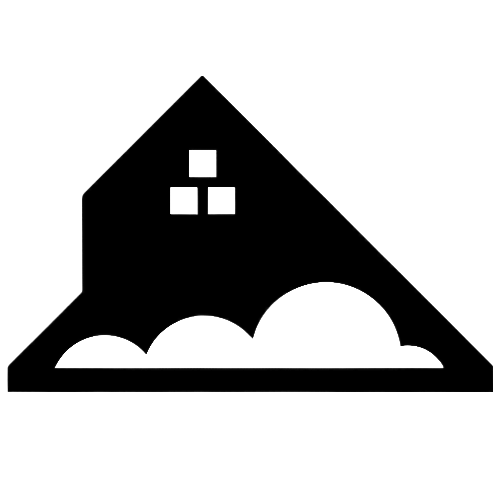When it comes to fire safety, one cannot underestimate the importance of having a reliable smoke alarm in your home. With the potential to save lives and protect property, a smoke alarm is a critical investment for every homeowner. Ensuring you have the best fire alarms installed can make all the difference in an emergency situation.smoke alarmA smoke alarm is an essential device that every household should have. Kidde, a renowned brand in the field of fire safety, offers a wide range of smoke alarms that are known for their quality and reliability. In this article, we will delve into the various types of Kidde smoke alarms, learn how to select the ideal one for your home, and discover where to access and utilize smoke alarm manuals. Moreover, we will provide expert advice on fire safety to help you prioritize the safety of your loved ones and your property.
Importance of Having a Smoke Alarm in Your Home

A smoke alarm is a vital component of any home’s fire safety strategy. Its primary function is to detect the presence of smoke and raise an alarm, alerting occupants to the potential danger of a fire. According to the National Fire Protection Association (NFPA), having a working smoke alarm in your home cuts the risk of dying in a fire by nearly half. This statistic alone underscores the significance of installing a reliable smoke alarm as part of your fire safety plan.
Smoke alarms not only provide an early warning to occupants, but they also facilitate quick response and evacuation in the event of a fire. They serve as an indispensable tool in the early detection of a fire, affording you and your family valuable time to escape safely. Additionally, smoke alarms can help minimize property damage by alerting emergency services at the earliest possible stage, underscoring their role in comprehensive fire safety measures.
Understanding Kidde Smoke Alarms
Kidde is a trusted name in the fire safety industry, renowned for producing high-quality smoke alarms that adhere to rigorous safety standards. Kidde smoke alarms are engineered to be reliable, efficient, and user-friendly, ensuring maximum protection for your home and loved ones. These smoke alarms utilize advanced technology to rapidly detect smoke particles and emit a loud alarm, providing you with ample time to respond to a potential fire emergency.
Kidde smoke alarms are available in various models, each offering unique features and benefits. Understanding the different types of smoke alarms, including the specialized carbon monoxide alarm, will assist you in making an informed decision when selecting the right one for your home. Whether you require a basic smoke alarm, a combination smoke and carbon monoxide detector, or an interconnected system for multiple rooms, Kidde has a tailored solution to meet your specific fire safety needs.
Types of Kidde Smoke Alarms
- Ionization Smoke AlarmsIonization smoke alarms are specifically designed to detect fast-flaming fires, which are characterized by rapidly spreading flames and intense heat. These alarms contain a minute amount of radioactive material that ionizes the air within the alarm chamber. When smoke enters the chamber, it disrupts the ion flow, promptly triggering the alarm and providing an early warning of fire.
- Photoelectric Smoke AlarmsPhotoelectric smoke alarms are adept at detecting slow, smoldering fires, which tend to produce a substantial amount of smoke before flames are visible. These alarms utilize a light beam and a photoelectric sensor to keenly detect smoke particles. When smoke disrupts the beam within the chamber, it scatters the light, effectively triggering the photoelectric smoke alarm.
- Combination Smoke and Carbon Monoxide AlarmsCombination smoke and carbon monoxide alarms offer dual-layered protection against two lethal threats: fire and carbon monoxide poisoning. These versatile alarms are designed with advanced sensors capable of detecting both smoke and carbon monoxide, delivering comprehensive safety for your home with a combination smoke and carbon monoxide alarm.
- Interconnected Smoke Alarm SystemsInterconnected smoke alarm systems are composed of several smoke alarms linked together, either wirelessly or through hardwired connections. Should one alarm sense smoke, it activates all the interconnected smoke alarm systems in the network, ensuring a unified alert is sounded throughout your home.
Selecting the appropriate Kidde smoke alarm is essential to match your needs and address the specific fire risks in your home. When choosing, consider the size of your home, the number of rooms, and the locations of potential fire hazards to ensure you opt for the most suitable Kidde smoke alarm.
How to Choose the Right Kidde Smoke Alarm for Your Home
Ensuring optimal fire safety in your home hinges on choosing the right Kidde smoke alarm. Key factors to weigh in your decision include the layout and size of your home, as well as the specific fire risks present.
- Type of Fire DetectionAssess whether your home requires an ionization smoke alarm, a photoelectric smoke alarm, or a combination smoke and carbon monoxide alarm, based on the unique fire risks it faces. Each type offers distinct detection capabilities, ensuring you are well-prepared for any eventuality.
- Power SourceKidde smoke alarms come in various configurations, including battery-powered, hardwired, and a hybrid of battery and hardwired options. Select the power source for your Kidde smoke alarm that aligns with your preferences and the structural layout of your residence, ensuring seamless integration and reliable performance.
- Features and ExtrasConsider integrating advanced features such as voice alerts, which can provide immediate warnings, and wireless interconnectivity that allows for a network of smart smoke alarms. Additionally, digital displays can enhance the functionality and user-friendliness of your Kidde smoke alarm system.
- InstallationEnsure that the Kidde smoke alarm you select is user-friendly with an easy smoke alarm installation process, accompanied by clear instructions. Should you have any doubts about setting it up, it’s wise to consult a professional for assistance.
Remember to follow the recommended placement of smoke alarms by installing them in every bedroom, outside each sleeping area, and on every level of your home, including the basement. It’s crucial to regularly test your smoke alarm to ensure it’s functioning correctly, and to replace the batteries at least once a year to maintain optimal performance.
Installing and Testing Your Kidde Smoke Alarm
Installing a Kidde smoke alarm is a straightforward process that can be accomplished by adhering to a set of simple steps. Here’s a guide on how to execute a proper smoke alarm installation for your Kidde device:
- Choose an Ideal LocationSelect an optimal location for your smoke alarm placement. Ideally, it should be mounted on the ceiling or high on a wall, strategically positioned away from corners and air vents to ensure maximum efficiency.
- Prepare the Mounting BracketSecurely attach the mounting bracket to your chosen location using screws or adhesive tape, ensuring it is firmly fixed and level to facilitate a smooth smoke alarm installation.
- Install the Smoke AlarmTo complete the smoke alarm installation, place the Kidde smoke alarm onto the mounting bracket and twist it clockwise until it locks into place, signaling that it’s ready to safeguard your home.
- Test the AlarmTo ensure your safety, it’s crucial to perform a smoke alarm test regularly. Press and hold the test button on the alarm to confirm its operational status. A functioning alarm will emit a sound; if silence ensues, inspect the battery or power source before attempting the test once more.
Conducting a smoke alarm test routinely is vital for verifying its reliability. This can be achieved by pressing the test button or using a specialized smoke aerosol for smoke alarm testing. Always adhere to the manufacturer’s guidelines to execute the test accurately.
Maintaining and Troubleshooting Your Kidde Smoke Alarm
For optimal protection, smoke alarm maintenance should be a part of your regular home safety routine. Below, you’ll find essential tips to ensure your alarm’s effectiveness.
- Clean the Smoke AlarmOne critical aspect of smoke alarm maintenance is keeping the sensors free from dust and debris, which can impair sensitivity. Employ a gentle touch with a soft brush or the nozzle of a vacuum cleaner to carefully clean the alarm.
- Replace BatteriesMaintaining your smoke alarm battery is key; for battery-operated Kidde smoke alarms, it’s recommended to replace the batteries annually or as soon as the low-battery signal alerts you.
- Check for Faulty AlarmsShould your Kidde smoke alarm exhibit any malfunctions or unwarranted alarms, it’s important to refer to the user manual or reach out to Kidde’s customer support for expert smoke alarm troubleshooting guidance.
It’s important to remember that smoke alarm replacement is necessary for your Kidde device every ten years or sooner. As smoke alarms age, their detection capabilities can wane, making timely replacement critical for ongoing safety.
Kidde Smoke Alarm Manuals: Where to Find and How to Use Them

The smoke alarm manual is an indispensable resource for the installation, operation, maintenance, and troubleshooting of your Kidde smoke alarm. Ensuring you are well-acquainted with the manual’s instructions is vital for the proper use and to enhance the smoke alarm’s efficiency.
Kidde’s official website is the go-to resource for smoke alarm manuals, accessible via their support page. Locate your specific smoke alarm model to download the smoke alarm manual in PDF format, which offers comprehensive guidance on installation, testing, maintenance, and troubleshooting procedures.
Adhering to the smoke alarm safety precautions outlined in the manual is imperative for the safe handling and operation of your smoke alarm. The manual also provides valuable information on warranty, product registration, and model-specific features to ensure you’re fully informed.
Expert Advice on Fire Safety: Tips and Recommendations
Beyond securing a dependable smoke alarm, adopting additional fire safety measures is crucial for safeguarding your residence and loved ones. Expert tips and recommendations can significantly enhance your home’s fire safety preparedness.
- Create an Escape PlanCrafting a fire escape plan with alternative exits from every room and regularly rehearsing it with your household is a key step in fire safety. This ensures everyone is prepared in case of an emergency.
- Install Fire ExtinguishersPositioning fire extinguishers strategically around your home, including the kitchen, garage, and near any fireplaces, is a smart fire safety move. Familiarize yourself with their operation to be ready for any fire-related incidents.
- Preventative MeasuresTo bolster fire safety, it’s crucial to take preventative measures like distancing flammable materials from heat sources, ensuring chimneys and dryer vents are clean, and exercising caution while cooking to minimize the risk of fire.
- Educate Your FamilyImparting fire safety education to your family is crucial, including the importance of never leaving candles or cooking appliances unattended, and the dangers associated with playing with fire.
Adhering to these fire safety tips and guidelines can drastically lower the chances of fire-related incidents in your home. It’s vital to remember that fire safety is a collective responsibility, necessitating the involvement of every household member to ensure a safe and secure living space.
Conclusion: Prioritizing Fire Safety with Kidde Smoke Alarms
When safeguarding your home and loved ones from fire hazards, Kidde smoke alarms stand as a trusted ally, offering dependable devices, comprehensive manuals, and expert advice. By discerning the various Kidde smoke alarms available, selecting the appropriate one for your residence, and ensuring its correct installation, maintenance, and regular testing, you can achieve an enhanced level of fire safety.
Moreover, Kidde smoke alarm manuals are a treasure trove of insights on the correct operation and troubleshooting of your device. By becoming acquainted with the manual, you can optimize the utility of your Kidde smoke alarm and confirm its operational efficacy.
Keep in mind, fire safety is an indispensable component of home security, warranting its prioritization in your everyday routine. By heeding expert fire safety advice, devising a fire escape plan, installing fire extinguishers, and embracing preventative strategies, you can substantially mitigate the threat of fire-related mishaps in your abode.
Investing in smoke alarms and enacting fire safety practices offers the reassurance that comes with knowing you’ve taken proactive measures to shield your loved ones and property. Elevate fire safety to a top concern and ensure you’re equipped for any potential fire emergencies.

















